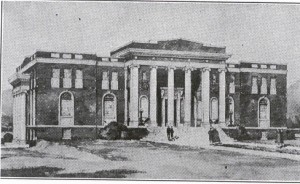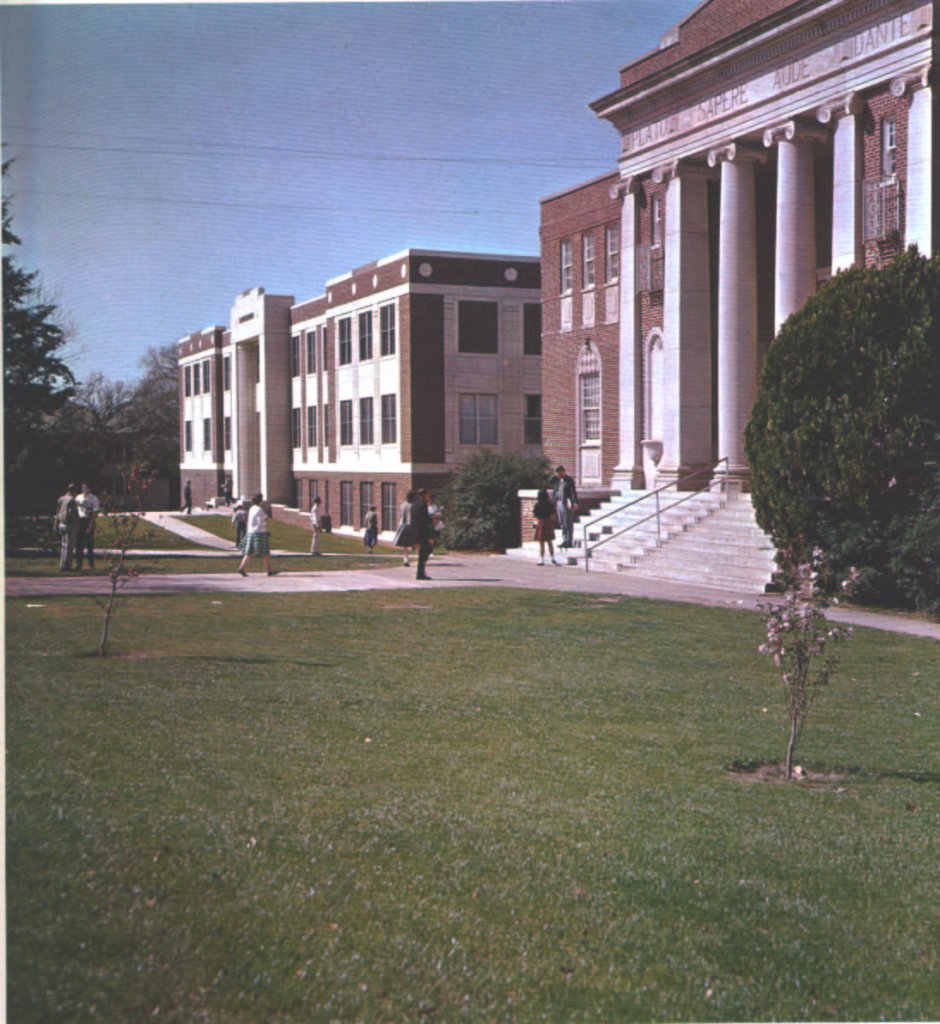History of the Library
The library at Southeastern Normal School began in 1909 when two librarians were hired, and the faculty of the new school were asked to donate ten books each to the new library. When the permanent building for the school was finished in 1910, the library was housed on the third floor. In 1911, a large shipment of books and materials was sent to the library. In 1915, the library was installed with lights, enabling students to study in the library at night. By 1917 the library had nearly one thousand children’s books, something that was not found in any other normal school in the state.

Library Building, 1928
Plans for housing the library in a separate building began early in 1927. Construction began in 1927 and completed in 1928 during the presidency of Henry G. Bennett, at a cost of $114,000. The library building featured four large Corinthian columns, a first floor magazine room and a second floor that could accommodate four hundred students. The third floor was for departmental libraries and contained several classrooms.
Tragedy struck the library on the night of October 2, 1934. The fire bell sounded on campus, and hundreds of horrified spectators watched as the Durant Fire Department put out the flames. The night watchman spotted the fire in the north end of the library building, and through his quick action the library building was saved. Once the fire was out, President Shumate, faculty members, students, and many Durant residents spent the night going through the thousands of wet books to determine whether they could be salvaged. The damage to the library was estimated at $50,000. The campus community was lucky that the beautiful colonial style building was saved from total destruction, and many of the thirty thousand books that the library housed were undamaged.
The library building was repaired and in the late 1930’s the library was designated as a depository for federal government documents, and lamp posts were installed in front of the library. Through the 1930’s and 1940’s improvements were made to the library building, and in 1954, air conditioning was installed. Another important event of the 1950’s was the addition of the 50,000th book in 1954.

Library Building, 1956
For many years the library building housed the cafeteria in the basement, as well as the library and classrooms above. It was a closed-stack library with the stacks on the south side. During the mid-sixties, the building was completely renovated with an addition on the south. It has been an open-stack library since then. The building was named the Henry G. Bennett Memorial Library in 1982 during homecoming festivities.
As computer technology progressed in the 1960’s, 1970’s and 1980’s, the library slowly began to implement computers in the library. By 1988, there were two databases for students on computer. The library services, were automated in 1990, when the Data Research Association Library System was selected which is an integrated on-line system providing circulation, public access catalog, cataloging, acquisitions, and serials components. The Ardmore Higher Education Center Library’s holdings are also included in the database. Further purchase of computer equipment and addition of more computer databases further increased the use of computers in the library. By 1997 there were thirteen computer for student use which enabled students to search several databases and use the Internet. The library began a web presence with introduction of its web page in 1997. In 1999 a computer lab was installed in the library with forty computers where students can do research, use library databases, write papers, or check their e-mail.
During the summer of 2002 the Library migrated from DRA to SIRSI which is an integrated web based automation system. The catalog can be easily accessed by anyone with an Internet connection. In April 2003, a student cafe, called Henry’s was added to the library as a place where students can relax, get a cup of coffee, and snacks, eat lunch, watch TV, talk, or study in a comfortable environment.
